Smart Home Theater Technology Of The Future! (My Predictions)
Smart Home Theater Technology Of The Future! (My Predictions)
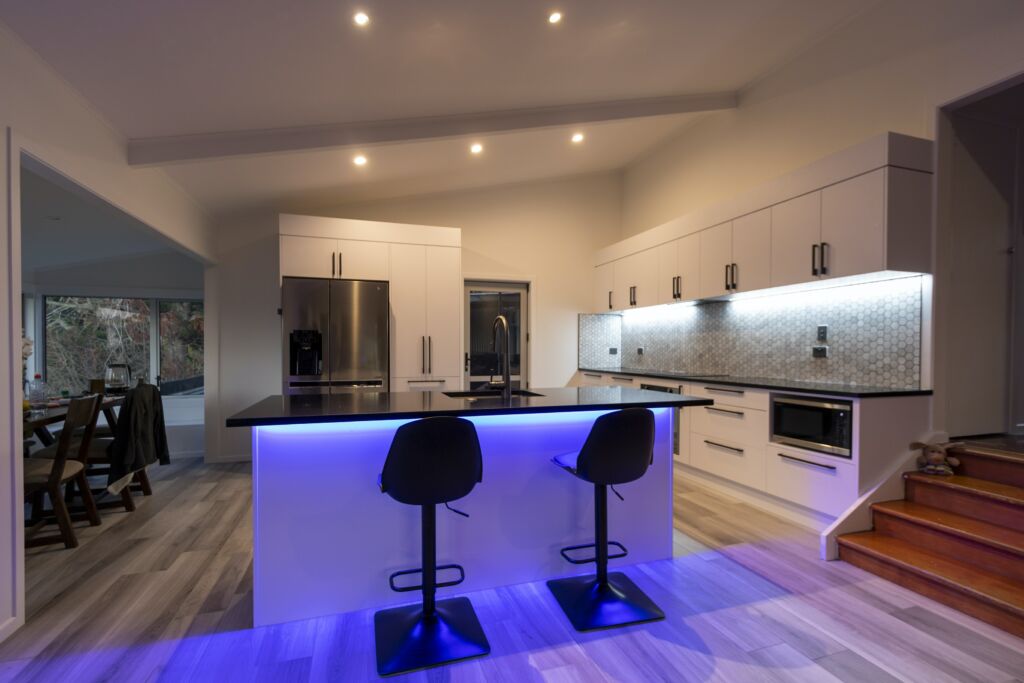
Whether you fully realize it or not, technology has proliferated into nearly every aspect of our personal lives in some way or another.
From fully motorized window blinds controlled via app, to electrical plugs that turn appliances into smart devices, a large portion of our homes are now considered smart homes in some way or another.
What’s interesting though is there’s one portion of life at home that hasn’t changed dramatically, and that’s home theater/entertainment.
As awesome as home theater can be — whether it’s watching a movie in surround sound, listening to your favorite music, or playing a video game, the core of the entire experience hasn’t really changed much in the last few decades.
I mean sure there’s a plethora of new technologies that have certainly introduced an interesting twist, (streaming for example) but for the most part, how we watch movies and enjoy all our favorite content hasn’t really changed much over the last few years.
However what if I told you that may not always be the case?
Imagine a reality where your TV can beam its signal to your surround speakers while calibrating your sound wirelessly without using Bluetooth.
Or imagine your house alerting you when you reach a certain electricity usage and shutting off lights in unoccupied rooms while automatically providing ways to maximize energy efficiency.

In fact, this might be the tip of the iceberg when it comes to the smart home theater technology of the future!
Let’s take a look at some of the technologies that I think, will be a staple in smart homes in the not too distant future; some even as soon as 2025 and beyond.
1.) Micro LED Displays

If you’ve been paying attention to televisions in the last few years, then it’s likely at some point or another you’ve come across what’s known as an OLED TV.
In short, an OLED TV (which stands for organic light emitting diode) is typically renowned for its ability to reach true black since it doesn’t use backlighting of any kind, and can turn each pixel off individually — whereas an LCD is still reliant on light for its picture.
This gives the image on screen a certain vibrancy and pop that usually only an OLED can give, but the problem is that they sometimes can’t get as bright as an LCD; especially when it comes to HDR.
Enter Micro LED.
Like the name would suggest, Micro LED is a new and extremely promising TV technology that uses individual LEDs down to the pixel, giving an absolutely unprecedented picture quality.
It takes the best from both visual technologies; being able to individually turn off each pixel like OLED, while achieving the extreme brightness of LCD, to provide the ultimate image quality in terms of color depth, clarity, and realism.
And while it might seem like Micro LED is a ways off given the fact there’s very few commercially available, even a simple 10 years from now they’re likely to be pretty common place.
https://easyhometheater.net/micro-led-vs-oled
2.) 8K Resolution

Here’s something that may actually manifest itself sooner rather than later, 8K resolution.
To be exact, that’s 7680 pixels horizontally and 4320 pixels vertically, for an impressive 4 times improvement over 4K, and an unbelievable 16 times improvement over HDTV.
If you’ve ever seen 4K in person, then you’ll know just how incredible it actually looks in motion.
Now try to imagine an image with multiple times more clarity than even that.
It’s pretty mind bending.
But you might be wondering well what’s even the point of 8K if we’re barely even just now standardizing 4K?
Does it actually bring anything of note?
Surprisingly it does.
I won’t go too in depth since I already wrote a dedicated article that I’ll list below, but basically some of the notable improvements you can expect from 8K are; invisible pixels to the human eye even close up, better quality 1080p/4K, improved color accuracy due to the increase in pixels, and improved clarity which are just some of the many surprising benefits that 8K offers.
This also just so happens to be the optimal resolution where the picture on screen seems the most realistic since we technically see things in 8K in real life, so there’s also that.
It might not be standard now, but in the future, this will be a pretty normal occurrence.
I mean there’s already commercially available 8K televisions, and even the new Xbox Series X & Playstation 5 support 8K resolution so it’s not as far off as one might think.
Interestingly though, I don’t personally feel there’s a point in going higher since it reaches a point of diminishing returns beyond that unless it’s for professional applications like photography.
But knowing the way technology advances, we might be looking at 12K resolution TVs 20 years from now lol.
Or maybe, there might be a new way to watch content beyond just the TV all together by then.
https://easyhometheater.net/8k-tv-is-coming
3.) New Wifi Standard – Wifi 6
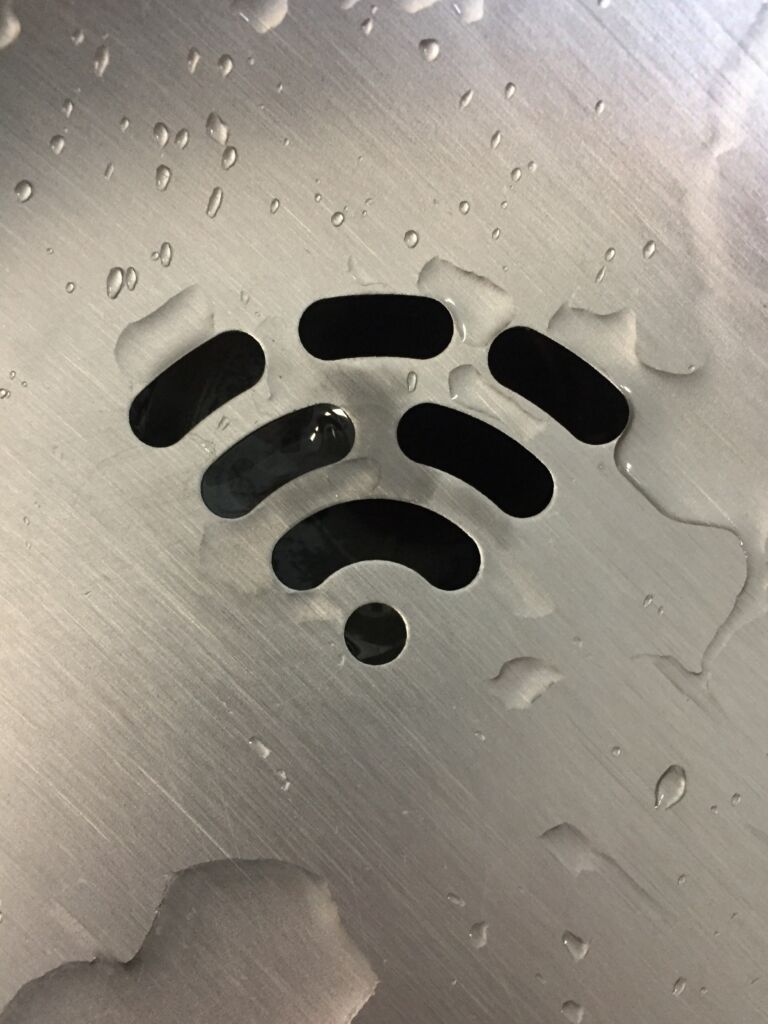
Another thing I think we’ll see a lot more of years from now is the next generation of wifi known as Wifi 6.
To put it simply, Wifi 6 brings with it a whole host of improvements over our now standard Wifi 5 (previously known as Wi-Fi, 802.11ac before being renamed for simplicity sake by the WI-FI alliance)
The first major benefit of this new generation Wi-Fi is the obvious speed boost from 3.5 Gbps (gigabytes per second) to 9.5 Gbps.
But given that these are theoretical maximum speeds and not the standard, you’re not likely to ever need to go that high, especially when the average speed right now is 72 Mbps or less.
However this speed can be divided between the devices connected to it, meaning those devices could hypothetically run faster if need be which is pretty helpful.
But this next iteration is a lot more than just a simple bump in speed, it offers more utility as well.
When a bunch of devices are connected to a single router (think a dozen or more) you may notice that there’s either a reduction in overall speed, or the router continuously disconnects all together.
This comes from it attempting to maintain its connection with each device, and after a certain point the airwaves can get congested.
The average household had about 5 devices connected at any given time when Wifi 5 was first introduced but now it’s likely greater than that.
This isn’t expected to slow down either, as it’s been predicted that within a few years we’ll be approaching 50 as our smart homes technology and home automation advance.
This is one of the main reasons Wifi 6 is being developed as it allows the the router to efficiently communicate with dozens of devices at a time while ensuring that they retain their speed, and even operate optimally on the same broadcast.
Then there’s even the newer iteration of that dubbed Wi-Fi 6E that operates on the 6GHz network for even faster speeds floating in the Gigabit range (which is absolutely incredible.)
Again as our homes become smarter, WIFI 6 is one of those technologies that will likely become universal due its wide host of benefits.
4.) Enhanced Voice Integration & AI

Voice assistants can certainly be helpful as they provide the vast information of the internet with convenience of a single voice command.
In fact, within a few years, it’s expected that a rapidly growing number of internet search queries will be through voice commands.
But imagine a scenario where this voice integration is dialed up to 11 and incorporated into everything like devices & appliances around the house too.
Picture walking into your house to unwind, and with the power of your voice, you turn on the TV, turn the temperature to the perfect setting, and ask your robotic assistant to make your favorite meal.
Talk about convenience.
More impressive still is the level of artificial intelligence that smart homes could also potentially have.
With a wearable pin that’s placed on the user’s body, or electronic sensors integrated via fiber optic cables within the home itself, your future smart home could track your location within the house automatically.
By knowing who and where you are, it could not only adjust things like lighting & temperature preferences automatically, but even anticipate your needs beforehand through machine learning.
It could adjust all of this info on the fly, all dependent upon who walks through the door.
As impressive as this all sounds, Bill Gates actually has a form of location tracking in his home already so the technology certainly is possible.
This one’s a little more distant though as voice control & AI is still being perfected, but in 15 years time this just might be the average day in a smart home.
5.) Smart Lighting That Senses Where You Are

Something else that I’m almost certain we’ll see sooner rather than later is smart lighting integrated into newly built homes.
Using PoE, (power over ethernet) this would allow the lighting in your home to sense when you’re present in the room and automatically turn on.
Then upon leaving that same room, they’d automatically turn off, saving you power.
As awesome as that seems, this can be applied even further. Imagine a scenario where you’re walking into your room at bed time and the lights in the room automatically turn on at a pre set level, and after being settled into bed, they turn off after at a set time.
Then if you happen to wake in the middle of the night for a glass of water, they automatically turn on but dimly, to help you find your way through the room.
There’s probably a lot more applications in which smart lighting could change, but that’s just one direction where l could see smart lighting going.
While it might not be something that’s all too common now, in a few years time, it just might be a technology that’s so normal we don’t even think twice about it.
I could even see bias lighting by extension changing in some form as well.
6.) Improved Energy Efficiency

Another improvement that I predict we’ll see in a few years time is a new found focus on improving energy efficiency within the home. There’s already various entities looking into improving the way we use electricity.
For example, a Maine-based company by the name of Powerhouse Dynamics recently managed to create a program that can track power usage within the household.
It can track what appliances use what amount of energy, and notify you of not only ways to improve your energy efficiency, but also let you know of any faulty appliances that may be sapping more energy than they need to.
It can even turn off lights in unoccupied rooms in the house which is really cool.
Later down the line, I think that we’ll really start to see more and more products that tout how incredibly energy efficient they are.
Even now, there are various companies and law makers looking at ways to improve energy efficiency across the board and I think this shows that a focus on energy efficiency is happening — and in 15 years from now, I feel like this will be even more true.
I mean hey, the mainstream shift to solar energy might even happen in the far off future.
7.) Modular Screens & TVs
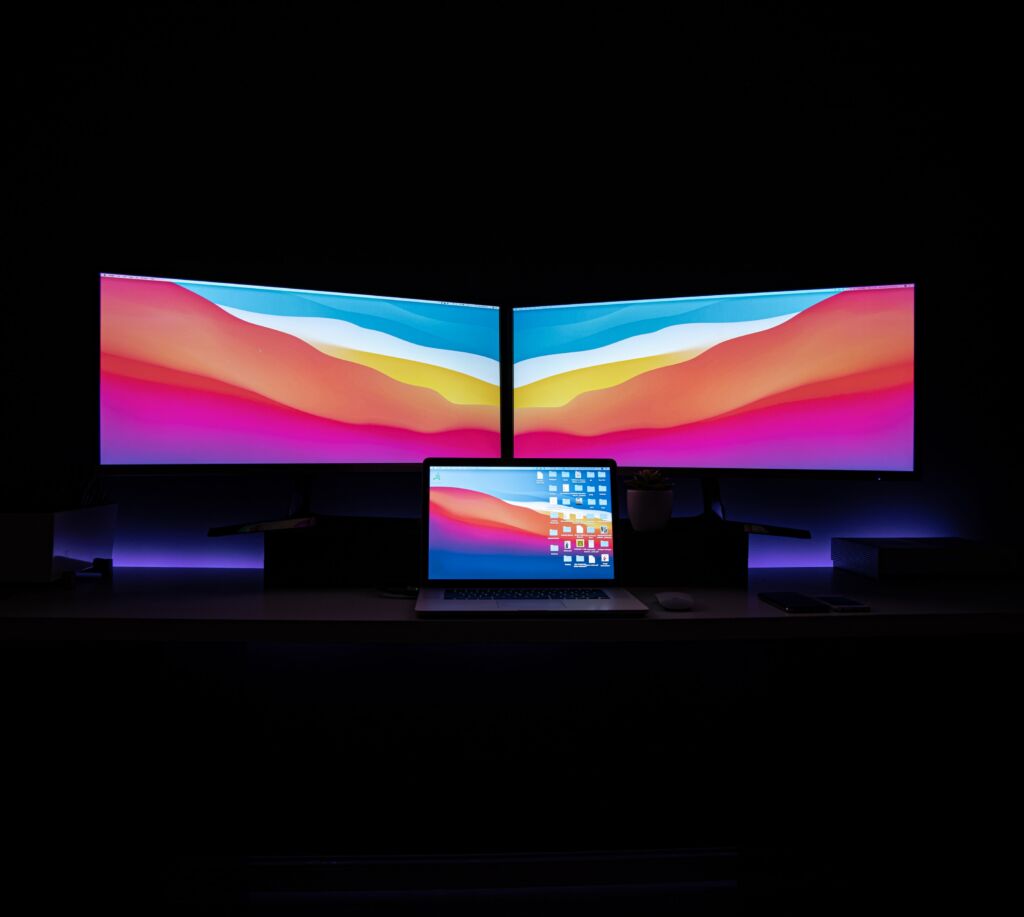
Imagine the ability and convenience to reshape your television into any size you wanted by adding or removing parts of it, still giving you a uniform image from individual parts snapped together.
Sounds like science fiction right?
Well actually they’re what’s known as modular TVs and in a decade from now, they could be common place.
But you may be asking well why the need for a TV that’s pieced together from individual parts? Is there any benefit to it?
Well modular screens actually solve quite a few of the problems regarding logistics that’s also associated with many televisions — especially the larger ones.
One of the main issues with televisions is that the larger they are, the more difficult it is to safely transport them without damage.
This size can work against it making it easier for something to go wrong during the shipping process if not enough care is taken when actually transporting the display.
This is where the first benefit of modular TVs come in.
Due to the fact that there’s smaller individual pieces that can later be fitted together to make that same big screen TV, it ultimately makes the shipping process a whole lot easier.
Those smaller pieces are not only much more manageable, but also less prone to damage since they can be packaged a lot more adequately. This also extends to the user.
If you’ve ever bought a big screen TV, then you’d know the difficulty involved in actually getting the thing in the house safely.
But imagine instead of having to carry one bulk item requiring the aid of a few people, you now carry much smaller pieces manageable with just a single person, into your house to then be assembled into a single big screen.
It’s this level of convenience that I think the future entails.
Another issue that modular TVs solve is that it makes shipping easier from an efficiency perspective.
Shipping multiple large displays that require lots of packaging in one freight truck or plane can be cost prohibitive, especially if one happens to break during transport.
By having multiple smaller displays, you can fit more of them in a space, which can streamline the entire process greatly.
Another really important problem that modular televisions help mitigate is uniformity issues when it comes to picture quality.
The problem with larger TVs is the more surface area you have for a given display, the greater the chance for there to be imperfections in the manufacturing process.
This can then manifest itself in the form of banding where it looks like there’s different segments of the same color separated by visible lines, or even clouding where there’s uneven splotches on the screen that becomes extremely noticeable whenever there happens to be a single color on screen (for example an all white image)
Due the the fact that each individual screen that makes up a modular display is much smaller and manufactured separately, the chances for these imperfections to present themselves are greatly reduced, giving you a much more uniform and satisfying image.
Again, while not presently commercially available in masse, these types of displays are coming, and bring with them quite a bit of promise.
Random side note but come to think of it, this is just a thought but I suppose they could technically make the manufacturing process of micro led TVs easier too in a way since there’d be less area to cover.
Could you imagine a modular micro led TV?
8.) Foldable Screens & TVs
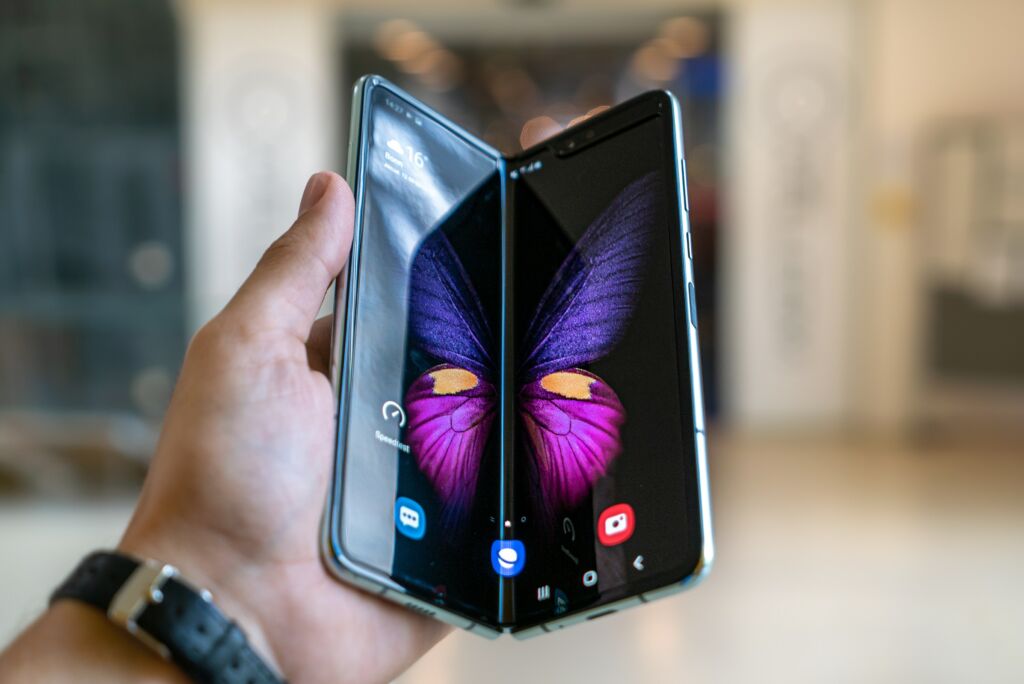
Even more unbelievable then a TV configured by snapping individual smaller screens together is a screen that can be rolled or even folded up and taken with you.
However as crazy as that might seem it’s actually something being explored by many of the top manufacturers as of right now.
For example LG is working a television that’s less than a quarter inch thick that when not in use, retracts into its base by rolling onto itself and is controllable via remote. Then there’s also the one that rolls down from the ceiling like a projector screen.
Or take Samsung for example, who’s working on a bendable display that they hope to one day widely incorporate into not only television displays, but even tablets and smart phones as well.
Now they’ve actually already managed to do just that with the innovative Z Fold smartphone, but I expect as the technology matures, for their to be additional implementation in additional devices and possibly even appliances too.
This could be helpful for a variety of reasons including increasing durability of devices, portability, and even just hiding the display for aesthetical purposes.
Plus it’s just a cool concept.
It’s this level of innovation that the entertainment space could end up seeing within the next few years, especially with display tech — and I gotta say, it’s pretty exciting to say the least.
9.) IMAX Enhanced Content
IMAX Enhanced is a new display technology that basically gives you an image that looks exactly how the director originally intended.
Now the main issue with current display technology is that while it definitely looks good, if any imperfections from the filming process are present, due to the sheer level of clarity, they become all the more apparent.
That obviously isn’t what the film maker had in mind and so the original vision gets clouded
IMAX Enhanced fixes that.
With it, it brings the promise of vast improvements to HDR, 4K & 8K, color reproduction and even sound improvements as well.
While it’s actually a feature that exists in a few TVs currently, within a few years, I feel that this feature will likely become common place.
https://easyhometheater.net/is-imax-enhanced-worth-it
10.) 3D TV Without Glasses & Holographic Displays

Remember how awesome 3D was and how it seemingly disappeared almost overnight?
Well it’s actually possible that in a few years it could very well make a well comeback in a big way (well sort of..)
You see, there are actually several manufacturers working on 3D display technology right now that completely forgos the need of using glasses to get the same effect.
Think about that for a moment.
There’s a real possibility we could end up getting glasses free 3D television!
How’s that even possible though?
Well with the way traditional 3D works, there’s 2 slightly shifted images that each eyes sees just slightly differently that your brain then puts together into a 3D image. This is known as stereoscopy.
Now there’s of course different types of 3D technology where the glasses either use a particular color filter, a special shutter, or are polarized, but the general idea is basically convincing the brain into thinking it’s seeing a 3 dimensional image.
However with the way 3D glasses-less work, it’s a little more complex since different companies are tackling it in different ways.
The basic gist though is using special filters in the television itself, then using a high resolution image, splitting it in a specific way, to give the same illusion.
It’s of course much more complex than that so I’ll leave a few articles below if you’re curious behind the exact science of a few of the different ways to achieve.
But the big takeaway here is that it is actually possible to enjoy 3D without the need for specialized glasses when done correctly.
Not only that, but there are working prototypes that have already been demoed at various tech venues including CES.
Even more impressive I think, is that some manufacturers are looking to take this a step further and create real holographic displays.
Yep that’s right, that kind of holographic.
Admittedly that might sound a little far fetched at first, until you consider the fact that there’s already working prototypes that do exactly that.
In 2018, a company by the name of Light Field Labs managed to create a working 4 by 6 prototype display that could actually beam holographic images into thin air.
Not was the need for glasses completely negated, but the user could actually move around freely to see different angles of the projected image.
How incredible is that?
I think this shows that as much progress as we’ve made with display tech, there’s still a lot of room for improvement and if any of these 2 technologies actually manage to come to fruition, then we’re certainly in for a visual treat.
https://www.lifewire.com/3d-without-glasses-1846075
https://www.broadbandtvnews.com/2020/04/28/nhk-developing-glasses-free-3d-tv-system/
https://www.digitaltrends.com/home-theater/3d-tvs-could-be-coming-back-light-field-labs-holographic-3d/
11.) Smart Receivers
AV Receivers are the brains when it comes to a complete home theater. They’re what controls everything and acts as a hub of sorts.
Over the years there’s been some impressive improvements including ones that support 8K and even smart assistant compatibility.
But what if the receiver itself was the smart assistant where even if you didn’t have an external assistant, you could just tell the receiver to turn the volume up on the center speaker, adjust the bass of a subwoofer, and turn on game mode for example all with the power of your voice?
Imagine full control without even needing to lift a finger.
This is something I could really see happening in the next few years where technology is advancing to the point where even every day appliances start to become smart.
12.) The Disappearance of Receivers (WiSA)
Another thing I could also very well see happening is the disappearance of the receiver all together, and it simply being built into the television natively.
Interestingly enough, the technology for this already exists.
Known as WiSA (Wireless Speaker & Audio Association) this is a new wireless audio protocol and certification standard founded by a company named Summit Wireless that uses a special chip within a display to allow for high fidelity, lag free, crystal clear sound to be transmitted to external stereo, surround sound, and even Dolby Atmos speakers without the need for any wires.
Imagine getting a TV that essentially is the receiver, allowing you to have full surround sound without requiring any wires, additional setup, etc.
That’s a level of convenience I’m sure many could appreciate.
What’s great is there’s already a growing number of AV companies on board for this technology meaning it has a very real chance of becoming mainstream in a number of years.
Should this actually happen, this could potentially mark a dramatic shift for the entire industry as a whole, something that doesn’t happen too often.
Of course, the speakers as well as the display need to first be WiSA certified, but could you imagine how awesome this could potentially be with not having to worry about wires?
It certainly has a lot of promise that’s for sure.
https://www.digitaltrends.com/home-theater/wisa-wireless-explained/
13.) HDMI 2.2
This one is more speculative for sure, especially seeing as how HDMI 2.1 isn’t even fully integrated yet.
Though if the past is anything to go by, then it’s a safe bet that at some point or another we’ll end up seeing HDMI 2.2.
But what benefits could it bring?
Well seeing as how HDMI 2.1 has a top speed of up to 48Gps at 8K at 60Hz, my thoughts is that with the next iteration of HDMI, we’ll end up seeing increased speeds with the likelihood of support for 8K 120hz, along with the potential support for even higher resolutions than that.
10K resolution TV anyone?
Not only that, but newer technologies such as WiSA, holographic displays, and Micro LED could be the precedent upon which it’s built as well.
Plus the support for whatever else pops up between now and then. Time will only tell of course, but I do think we’ll end up seeing it at some point in the distant future; at least a decade in my opinion.
14.) Next Gen Bluetooth LE Integration

Another really cool technology that’ll almost certainly become widespread in the upcoming years is the next generation of Bluetooth.
Dubbed Bluetooth LE, (Low Energy) this new audio streaming specification introduced by the Bluetooth Special Interest Group (SIG) at CES 2020 allows you to wirelessly share audio from a single smartphone to many headphones at the same time.
There’s also a new audio codec included called LC3 that uses less power than the previous standard SBC, and improves the overall sound quality.
This Bluetooth Low Energy chip marks the first time it’ll be used for this purpose since it was only previously used in low bandwidth applications like smart home sensors and health monitors.
The fact that this new standard provides better sound quality while being more energy efficient is great, and the ability to stream to multiple sets of headphones or even speakers simultaneously is extremely useful — especially when applied to smart home applications & entertainment.
This is one I think you’ll end up seeing a lot sooner rather than later as far as integration and widespread adoption is concerned as there’s a lot of potential uses.
https://www.digitaltrends.com/home-theater/bluetooth-le-audio-ces-2020/
15.) Multiple Screen Viewing
As great as one screen is, in the future, more people may use more than one television when enjoying their favorite content.
Similar to the way multi screen setups on pc work, a multi screen TV setup would allow for a wider field of view and could provide for some really interesting uses when it comes to movie applications.
Of course these new televisions would have to support it, but in the future, these could very well become a reality.
16.) VR/AR Movie Watching
If you’ve never tried VR (virtual reality) then I highly recommend it at least once. The experience it provides when done right really transcends words to be honest with you.
It really is like you’re actually there in the scene.
The great thing though is that this technology is only going to improve with age and in a few years, it’s likely that there will be higher resolution headsets as well.
This could potentially mean applicability towards traditional content rather than just gaming, and could be a new and engaging way to enjoy all your favorite movies.
I mean what’s more immersive than actually feeling like you’re there?
On the flipside of virtual reality is augmented reality or AR, and this could be another way to enjoy content.
Similar to how it works currently on smartphones, adding virtual objects and characters into the real world but on screen, AR could be implemented in televisions in much the same way; providing for yet another layer to helping your content to feel that much more enthralling.
Surprisingly it’s not as far off as you would think either as there are quite a few companies already researching ways on properly implementing the technology.
Apple for example released an augmented reality app in 2021, and later developed an AR headset that released in 2024.
However you look at it, there’s a pretty good chance that we could realistically see VR & AR being used in surprising new ways in a few years time which is really exciting.
17.) Smart Paint

This is one of those things that almost sound like science fiction the first time you hear about it.
Imagine being able to turn any object into a touch screen just by painting over it.
Sound a little out there?
Well that’s, exactly what scientists at Carnegie Mellon University managed to do.
The new technology called Electrik works by first coating an object with this conductive spray paint, allowing the object to conduct a small amount of electricity via a process called electric field tomography.
Then by placing small electrodes on the corner of the object, it’s able to detect any disruptions in this small electrical field and react in the form of input from the press of your finger.
It’s still very much new and being heavily researched, but the promise from initial testing proves it could have far reaching benefits including helpful applications within the future smart home too.
Just as impressive though, and somewhat similar, is another form of paint called electric paint that actually, like the name would suggest, conducts electricity.
Developed in 2009 by Bare Conductive, this type of paint was made commercially available to alleviate some of the concerns of prior conductive paints such as constricted availability and limited usability.
Now the the potential applications for this are vast.
Imagine instead of having to deal with complex wiring, you instead simply paint a wire saving time and hassle.
That’s just one example of course, but there’s so many possible uses for this that it’s honestly hard to really name them all.
But this is something that, if it gains in popularity over the years, could transform the set up process when it comes to smart homes entirely.
18.) ATSC 3.0 As The New Standard

One new development that I’m all but certain we’ll see in the coming years is ATSC 3.0 — or in layman’s terms, higher resolution cable.
Now with what we have currently today, cable resolutions typically top out at around 1080i and to be honest, haven’t really strayed from this resolution in quite some time, at least in the United States.
In places like the UK and Japan for example, there already exists higher resolution cable where content is shown in 4K.
But with ATSC 3.0, this will help to standardize this across the board.
So what’s exactly new with this new standard though?
Quite a bit actually.
Besides improvements to resolution, there’s also enhancements to audio for improved clarity, improved compression efficiency, more reliable transmission stability when it comes to televisions and mobile, and better personalization, interactivity, and accessibility.
On top of that, it’s built with the same foundation that modern streaming platforms are built on making it easy to improve and be compatible with further out future technologies — and acts as a way to bring together Over-the-air with Over-the-top content for a better experience.
There’s even a more robust and advanced emergency alerting & informing system to more quickly and efficiently disseminate important information.
As you can see there’s many benefits to ATSC 3.0 as you can quite literally consider this next gen TV in a way, and there are already quite a few manufacturers and industry leaders on board.
Expect 4K broadcasting to become the norm when 4K TVs become more widely used since right now, the majority of people still use 1080p displays.
In 10 years though? Not so much.
I think that’s when we’ll really start to see this kick off when the adoption rate of high resolution displays goes up although who knows, maybe it could be sooner?
19.) 12 Bit & Higher Color

If you’ve ever had the opportunity to view a display with an expanded color gamut, then you’d know just how big of a difference it actually makes in motion.
The standard color palette used in displays is referred to as 8 bit color and is capable of displaying over 16 million colors in total.
It does this by displaying exactly 256 colors for every red, blue, and green pixel.
Pretty impressive right?
Well 10 bit panels that tout an expanded color palette, often referred to as the DCI-P3 spectrum, (or Rec2020 for the 100% color accuracy) bump this up 64 times to 1024 possible colors for every pixel — resulting in over a billion different colors total which is incredible.
But if you thought it would just stop there, think again.
As of right now, various manufacturers are working diligently to produce commercial ready 12 bit panels actually capable of displaying a whopping 68 billion different colors.
Unbelievable.
A few of the big benefits of 12 bit panels is that they would produce more lifelike and vivid images, reduce dithering, and be more accurate when it came to representation of the different colors in a scene.
12 bit isn’t here just yet, but in a decade, it very well could be common place. I think there’s a good chance we’ll end up seeing it at the consumer level at some point.
20.) Robotic Furniture

This one sounds like its straight out of a Sci-fi movie but it’s one that very well could happen.
Imagine having a motorized bed that when not in use, could retract into the ceiling, subsequently revealing a full sofa and coffee table in its place.
Or picture having 2 shelving walls that at the press of a button, open up to reveal a fully useable walk in closet.
Well this is exactly what the Boston based startup named Ori is working on.
Ori is a part of the larger organization MassRobotics which studies the subject of robotics, and incorporates it into different scenarios that you’d encounter in every day life.
Their focus and reason for this shape-shifting furniture in particular is actually pretty interesting.
Their entire premise can be traced back to what was known as the Cityhome project that was originally created in 2011 by MIT Media Lab’s Changing Places group.
This was basically a study that found that US apartment floorplans were basically shrinking at the time and that by 2050, 66 percent of people are predicted to be living in cities.
So given that the amount of useable space in the average US apartment was becoming less and less, they wanted to basically allow for a way to not only have furniture take up less space, but have it be multipurpose as well.
This is just one example of many when it comes to all the different companies actually working on some form of this currently.
Furniture with the ability to change not only form, but its use case entirely I think is ingenious because not only could it ultimately save space allowing you to place more stuff in a room, could also serve as a way of transforming the look of your room too — allowing for some really interesting decorating possibilities.
This company and their ideal of saving the user space while incorporating advanced tech into their decorum is just the beginning in terms of what we’ll begin to see within the average smart home years from now.
Fully motorized & voice controlled furniture could become standard, and robotic furniture that changes form depending on how you want your room to look for that particular day could usher in a new way to customize your home.
Even with regard to home theater, this could breathe new life into the entire experience.
Sure there’s retractable projectors that come out of the ceiling, but imagine having retractable theater seats that come out of the floor when it’s time for movie nights.
There’s so many possibilities there that it’s honestly really exciting to see where it goes in the next few years.
21.) Light Up Walls

Ambient lighting is a great way to add character to a room and can even act as a way to reduce eyestrain from the contrast of a bright screen and dark room.
There’s even smart lights that integrate with the display that can change color depending on what’s happening on screen.
But imagine taking this a step further and having the walls themselves act as the lights; adjusting things like brightness, color, and even tone with the press of a button.
Cooler still would be full voice integration, allowing you to simply say a color and intensity level out loud, with the walls adjusting automatically to that particular command.
Now there’s already technically a way to somewhat achieve this now with led lighting hid cleverly behind a couch or counter for example, but in the future, the average smart home could simply have native lighting built in as standard.
Will this absolutely happen?
Not sure honestly, but I’ve heard of a few companies that were exploring this so should be interesting to see nonetheless — even if not for proof of concept.
Implementation of this in a smart home would no doubt require professional input, but the tech may advance to the point where it’s simply common place.
22.) Day & Date Movie Releases

This is one I think we’ll inevitably see sooner rather than later.
As more people begin to take an interest in home entertainment and opt to stay home, I feel as though more movie makers may decide to release their movies day and date for home release.
We’ve already seen the time between a film’s run in a movie theater and their home release shorten, so I personally think that period will shorten to the point where we start to see these bigger movie reach our homes screen the same day.
When this happens across the board remains to be seen of course, but I definitely think this may happen at some point in the near future (5 years-ish)
23.) Full Support For 24.2.10 Dolby Atmos Configurations
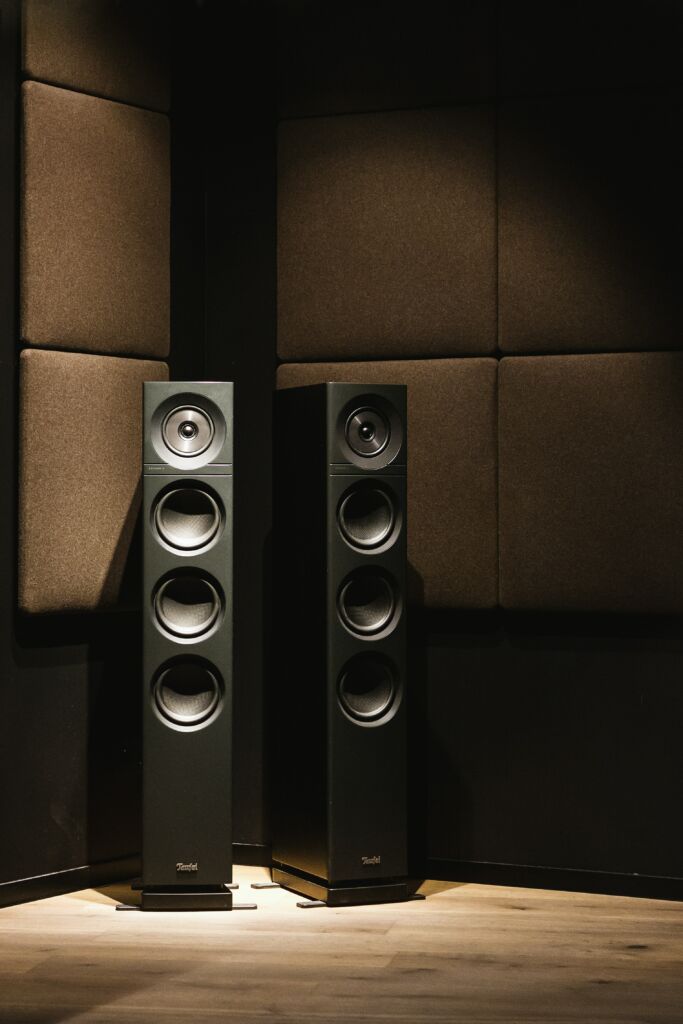
A memorable part of the true movie theater experience (besides the great food) is getting to hear that thunderous bass and pristine visual effects in surround sound.
When done right, it makes the action on screen all the more realistic — and if you’ve ever been to a proper Dolby theater with Atmos, you’d know just how engaging it can be
Dolby Atmos is an object based sound, meaning rather than simply approximating certain sound effects, it can actually now stimulate the sound per object, giving a much more precise convincing representation overall.
For example in a scene with rain, you’d be able to hear each raindrop falling around you as it hit the floor. Or if someone was bouncing a ball, it’d sound like it was actually bouncing off the ground in the correct direction.
As great as it is currently, there’s actually additional room for improvement for it to each its full potential.
As of right now, receivers only support 13.2 channels or 9.1.4 when using Atmos which is a far cry from the 24.2.10 Atmos supports at the upper limit.
As time goes on though, you can expect receivers to increase the amount of speakers they support and who knows – maybe in 10 or so years, we might see full Atmos support receivers which would be awesome.
24.) Dolby Vision Gaming

Dolby Vision if you haven’t seen it in person already can be summed up in 1 word, breathtaking.
It’s a variation of HDR that adjusts the meta data within a picture scene by scene, giving a more dynamic and colorful image quality (that’s of course putting it lightly)
It’s hard to describe just how beautiful Dolby Vision looks without seeing it yourself, but trust when I say it’s a huge step up.
So imagine my surprise when it was announced that the next gen Xbox Series X from Microsoft will actually support Dolby Vision for gaming in 2021.
Overjoyed doesn’t even begin to describe it.
This could be huge with regard to showcasing next gen games, as this is going to make them look even more spectacular.
Carrying the benefits of this HDR format into gaming is honestly something I didn’t even think of, so it’s incredible to think we’ll actually be seeing the benefits that are typically only reserved for movies, in gaming.
25.) The Move To All Digital
Ahh, the move to all digital.
This is the one I think is the most typically debated as some feel as though we should go full digital, while others feel that the physical medium should stay.
While I wrote an entire article on exactly this, I personally feel as though it will happen, just not yet.
As of right now, the split between physical and digital media certainly seems to be widening but with the rebirth of certain mediums like vinyl for example, we’re not quite there yet.
In order for this to happen, the CD itself would have to go the way of the dinosaur and I personally can’t see that happening any time soon; especially with what devices still have Blu-ray and even 4K Blu-ray drives like the Playstation 5 & Xbox Series X for example which will probably be around for a while.
But streaming will likely continue to gain in popularity due to its ease of use and make no mistake about it, at some point in the far off future, the move to all digital will eventually happen.
The industry is certainly heading in that direction I feel, but the good news is that I really don’t think it’ll be anytime soon.
This is all just conjecture of course, since it remains to be seen what will actually happen, but I really do feel like it’ll be decades before we actually see the physical medium vanish.
An Additional Thought: The Metaverse
The metaverse is something that several different companies are potentially looking into.
While it might seem like a buzzword now, in the future the metaverse may be something that impacts every part of our lives; including home theater.
What that fully entails or is ever realized remains to be seen, but it’s something to keep in eye on for sure.
Final Thoughts
Well that about wraps it up for this one folks.
Hopefully you’ve enjoyed this detailed look at some of the truly remarkable upcoming smart home technology of the future & just how much of an impact it’ll have on not only our daily lives, but our home entertainment experiences too.
There’s of course many variables between now and then since technology is always evolving, but these are some of the advancements I feel we’re most likely to see.
But who knows, there could even be some larger, surprise developments over the years not listed here that end up revolutionizing our lives entirely.
In any case, it’ll certainly be interesting and in any way you look at it, we’re in for a treat from a technology standpoint.
But hey, maybe you have an idea of what that could be? Or maybe you have a question about something?
Feel free to ask or let me know down below since I’d love to hear from you either way.
Until next time though, make it easy, keep it simple.
About Me

Jay
Hey everyone it’s nice to meet you. I'm Jay, writer & founder of the site Easy Home Theater. I've been with this hobby of home entertainment for many years now. I decided to create this site to be a helpful resource, and share everything that I've learned from personal experience with you. I also happen to be a huge gamer, lover of all things tech related, and a major fitness buff (love weightlifting)
Contact: Contact Jay
Facebook: https://www.facebook.com/Easyhometheater/
X: https://x.com/easyhometheater
Pinterest: https://www.pinterest.com/easyhometheater/pins/
Instagram: https://www.instagram.com/easyhometheater/
Followit: https://follow.it/easy-home-theater
Bluesky: https://bsky.app/profile/easyhometheater.bsky.social



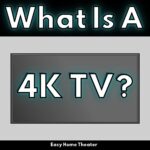



Leave a Reply